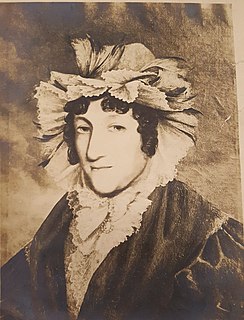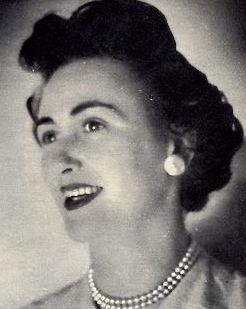Related Research Articles

The First Fleet was a fleet of 11 ships that brought the first European and African settlers to Australia. It was made up of two Royal Navy vessels, three store ships and six convict transports. On 13 May 1787 the fleet under the command of Captain Arthur Phillip, with over 1400 people, left from Portsmouth, England and took a journey of over 24,000 kilometres (15,000 mi) and over 250 days to eventually arrive in Botany Bay, New South Wales, where a penal colony would become the first European settlement in Australia.

Penal transportation or transportation was the relocation of convicted criminals, or other persons regarded as undesirable, to a distant place, often a colony, for a specified term; later, specifically established penal colonies became their destination. While the prisoners may have been released once the sentences were served, they generally did not have the resources to return home.
Grey's Anatomy is an American medical drama television series that premiered on March 27, 2005, on ABC as a mid-season replacement. The series focuses on the lives of surgical interns, residents, and attendings as they develop into seasoned doctors while balancing personal and professional relationships. The title is an allusion to Gray's Anatomy, a classic human anatomy textbook first published in 1858 in London and written by Henry Gray. Shonda Rhimes developed the pilot and continued to write for the series until 2015. Krista Vernoff, who previously worked with Rhimes, is now the showrunner. Rhimes was also one of the executive producers alongside Betsy Beers, Mark Gordon, Krista Vernoff, Rob Corn, Mark Wilding, Allan Heinberg, and Ellen Pompeo. Although the series is set in Seattle, Washington, it is filmed primarily in Los Angeles, California, and Vancouver, BC.

Lady Penrhyn was built on the River Thames in 1786 as a slave ship.
Margaret Dawson, also known as Margaret Henderson, was a convict sentenced to transportation. She travelled on the Lady Penrhyn as a member of the First Fleet to establish a British colony in Australia. She had a long-term relationship with the surgeon, William Balmain, whose descendants still live in Australia.

Saffron Domini Burrows is an English actress and model who has appeared in films such as Circle of Friends,Wing Commander,Deep Blue Sea,Gangster No. 1,Enigma,Troy,Reign Over Me and The Bank Job. On the small screen, she has starred as Lorraine Weller on Boston Legal, Dr. Norah Skinner on My Own Worst Enemy, Detective Serena Stevens on Law & Order: Criminal Intent and Victoria Hand on Marvel's Agents of S.H.I.E.L.D.. She appeared as Cynthia Taylor on the Amazon Video series Mozart in the Jungle and as Dottie Quinn in the Netflix series You.

Esther Abrahams was a Londoner sent to Australia as a convict on the First Fleet. She was de facto wife of George Johnston, who was for six months acting Governor of New South Wales after leading the Rum Rebellion. Later they married.
Mary Bryant was a Cornish convict sent to Australia. She became one of the first successful escapees from the fledgling Australian penal colony.

Lauren Cohan is an American-British actress best known for her role as Maggie Greene in the AMC post-apocalyptic horror television series The Walking Dead. Her other notable TV roles include Bela Talbot in the dark fantasy drama Supernatural (2007–2008), Rose in the supernatural teen drama The Vampire Diaries (2010–2012), Vivian McArthur Volkoff in the action comedy Chuck (2011), and Francesca "Frankie" Trowbridge in the action comedy-drama Whiskey Cavalier (2019). Her film appearances include the comedy Van Wilder: The Rise of Taj (2006), the psychological thriller horror The Boy (2016), the biographical drama All Eyez on Me (2017), and the action thriller Mile 22 (2018).

Sybil Connolly was a Dublin-based fashion designer who was known for creating fashion from Irish textiles, including finely pleated linen, wools such as Báinín, Limerick and Carrickmacross lace, and later for her work with brands such as Tiffany & Co. Her fashion label's clients included Jacqueline Kennedy.
Robert Sidaway, a convict of the First Fleet, was transported to Australia for stealing in 1788. Robert is known for being baker for the British Marines of Sydney and opening the first theatre in Sydney in 1796.

The Finder is an American procedural drama television series created by Hart Hanson that ran on Fox from January 12, 2012 to May 11, 2012. The series originally aired on Thursdays at 9:00 pm, and moved to Fridays at 8:00 pm beginning April 6, 2012. It is a spin-off of another Fox television series, Bones, where the backdoor pilot, a season six episode entitled "The Finder", aired in April 2011. It is loosely based on The Locator series of two books by Richard Greener. On May 9, 2012, Fox cancelled the series after one season.
Thomas Smyth was an English merchant, banker and Lord Mayor of Liverpool.

There are 20 known contemporary accounts of the First Fleet made by people sailing in the fleet, including journals and letters. The eleven ships of the fleet, carrying over 1,000 convicts, soldiers and seamen, left England on 13 May 1787 and arrived in Botany Bay between 18 and 20 January 1788 before relocating to Port Jackson to establish the first European settlement in Australia, a penal colony which became Sydney.

Arthur Bowes Smyth was a naval surgeon, who traveled on Lady Penrhyn as a part of the First Fleet that established a penal colony in New South Wales. Smyth kept a diary and documented the natural history he encountered in Australia.
George Atkinson, also known as George Atkins, was an English convict sent to Australia aboard a ship of the First Fleet. He was a chimney sweeper.
Sarah Bellamy was a convict on the First Fleet to Australia. She was sentenced for several years' transportation and was one of the longest-living first fleeters.
Lady Penrhyn was an American vessel launched in 1777 that the British captured in 1782. Liverpool merchants purchased her and employed her in the African slave trade between 1783 and 1794. A squadron of the French navy drove her onshore on the coast of Africa in 1794.
Dorothy Bulstrode or Boulstred (1592-1650) was a lady-in-waiting to Anne of Denmark. One of her older sisters was Cecily Bulstrode, who was the subject of poems by Ben Jonson and John Donne.
Stories of Convicts on the First Fleet contains information about a number of convicts on the First Fleet to the penal colony of New South Wales who meet the following criteria:
References
- 1 2 3 4 5 6 "318. DOROTHY HANDLAND". Old Bailey. 22 February 1786. Archived from the original on 20 September 2016. Retrieved 22 June 2016.
- 1 2 3 4 "Here Comes an Old Woman from Botany Bay, What have you got to give her today? – Tall Tales and True". Archived from the original on 7 October 2016. Retrieved 22 June 2016.
- ↑ "37. WILLIAM TILL". Old Bailey. 14 December 1785. Archived from the original on 20 September 2016. Retrieved 22 June 2016.
- ↑ "First Fleet Convicts Register - Convict Profile: Dorothy HANDLAND". firstfleet.thruhere.net. Archived from the original on 28 July 2016. Retrieved 10 April 2020.
- ↑ Bowes Smyth, Arthur (1790). A Journal of a Voyage from Portsmouth to New South Wales and China in the Lady Penrhyn, Merchantman William Cropton Sever, Commander. Archived from the original on 25 June 2016. Retrieved 22 June 2016.
- ↑ Hughes, Robert (1986). The Fatal Shore. New York: Alfred A. Knopf, Inc. p. 73. ISBN 0-394-75366-6.
- ↑ Collins, David (1798). An Account of the English Colony in New South Wales (PDF). T. Cadell Jun. and W. Davies. Archived (PDF) from the original on 7 May 2018. Retrieved 22 June 2016.
- ↑ Hassan, Riaz. "Whores, damned whores and female convicts: Why our history does early Australian colonial women a grave injustice". The Conversation. Archived from the original on 17 September 2019. Retrieved 10 April 2020.